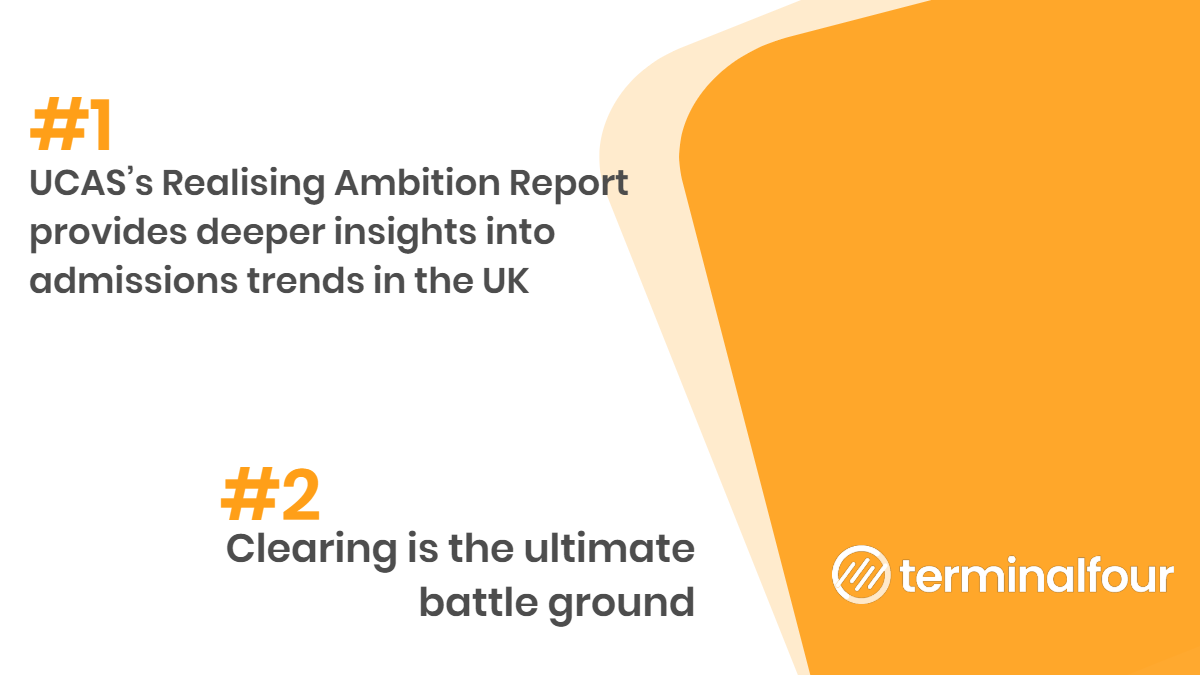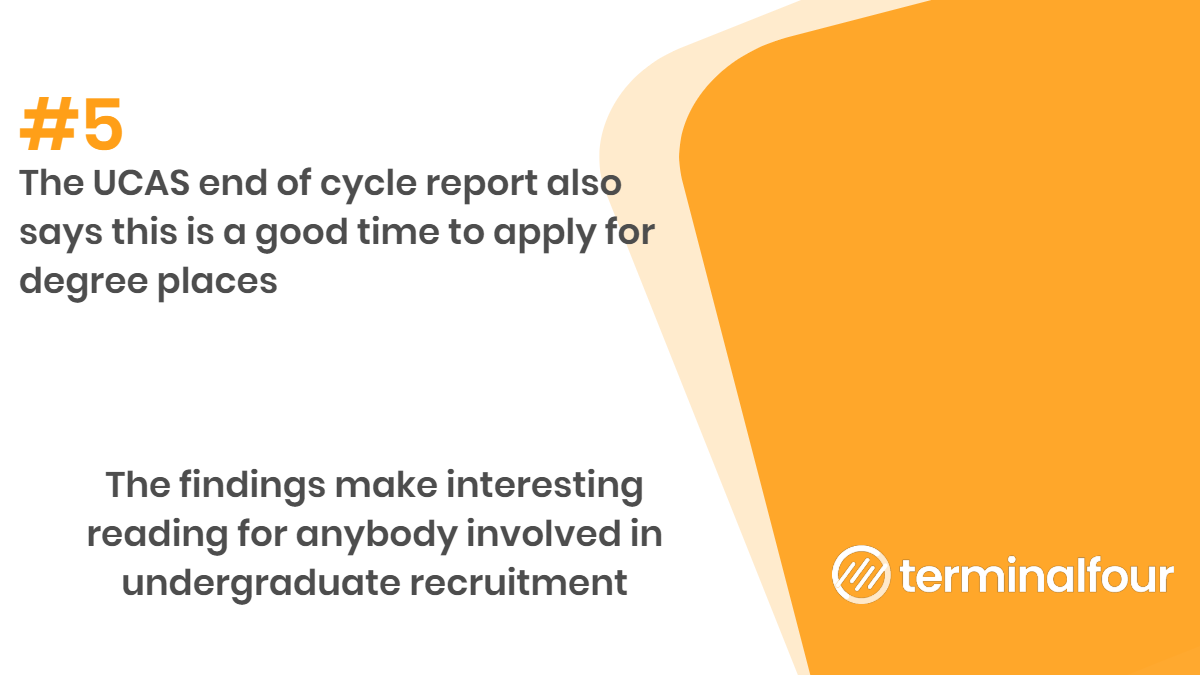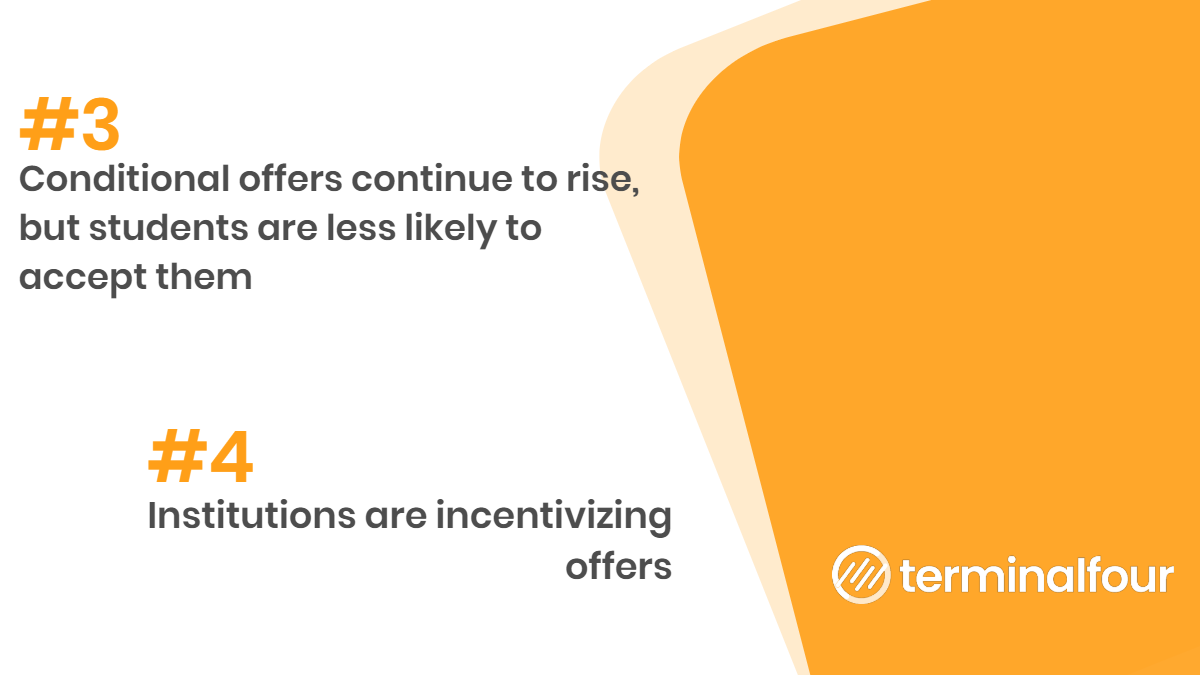In the run-up to Christmas UCAS launched a significant update to its end of cycle reports covering admissions trends and the state of unconditional offers. The findings make interesting reading for anybody involved in undergraduate recruitment.
UCAS's Realising Ambition Report provides deeper insights into admissions trends in the UK
Firstly, the ongoing decline in the applicant pool has been cited as a key driver for the new high in university offers, which now stands at 97.8%. It seems that if you have a desire to get to university you'll find somewhere to take you.
That said, the equality gap is still pronounced, with the most advantaged students being around 2.3 times more likely to enter higher education. But encouragingly, the most disadvantaged students are 61% more likely to enter university now than they were ten years ago, with universities and colleges increasing their outreach activities and use of contextualized admission.

Clearing is the ultimate battleground
A-level results day is 'make or break' for many students in the UK. But they aren't the only ones being put to the test.
As a recap for those of you working in Higher Ed outside the UK, Clearing is when universities offer unfilled places outside the standard central admissions process.
Students can use this period if they didn't meet the entry requirements for a degree to see if the institution will accept their application with lower grades or offer a similar course.
Or for students matching or exceeding their predicted grades they can also use Clearing to 'shop around' and make last-minute changes to their institution and course choices.
This has created an increase in transient student activity and resulted in even more competition.
This year the number of people accepted through Clearing rose nearly 10% and exceeded 73,000 for the first time. And 28,000 applicants used the new online self-release capability.
It's become the ultimate battleground for UK institutions.
The applications numbers in brief
- A record 541,240 students were accepted onto undergraduate courses this year.
- Last year saw a new record 34.1% entry rate for UK 18 year olds.
- 15% growth in UK students aged 35+ accepted.
- Over 45,000 applicants from outside the EU were accepted for the first time ever.
- Record entry rates for English and Welsh 18 year olds, 35% and 29.8% respectively.
- An all-time high of 44.5% of 18 year olds from London accepted into higher education.
- The entry rate gap between the most and least advantaged to higher tariff universities is now the lowest ever, after narrowing by 8% in 2019
- 19,640 people were placed after applying directly into Clearing.
- 37.7% of 18 year old applicants from the UK received an offer with an unconditional component.
Conditional offers continue to rise, but students are less likely to accept them
For the first time, over a quarter of 18 year old applicants in the UK received a ‘conditional unconditional offer' for an undergraduate course.
These strangely labeled offers are initially made by the university as conditional, then updated to unconditional if the offer is accepted as the student's first (firm) choice.
But the key finding relating to these is that their value has diminished and applicants are less likely than ever to accept this type of offer. And they are now only marginally more likely to choose a conditional unconditional offer as their firm choice than any other offer. For applicants who have five offers (including one conditional unconditional offer) only 20% chose to accept the first choice offer (down from 25% in 2014).
Institutions are incentivizing offers
Based on responses from over 30,000 applicants UCAS has found that over half (54%) of 18 year olds in the UK reported receiving an offer with an incentive to select the provider as their first choice.
Of those applicants:
- 56% reported receiving an offer where the provider would change the conditional offer to unconditional on the grade outcomes of the applicant.
- 30% reported receiving an offer promising a guaranteed place in university halls.
- 17% reported receiving an offer which would include a scholarship, bursary or cash payment.
The biggest change from the previous year was the response to the question about the promise of a lower grade offer or entry requirement as an incentive for selecting the institution as their first choice. This has risen to 36% from 23% the previous year.

A good time to apply to university in the UK
The UCAS end of cycle report also says this is a good time to apply for degree places as the UK 18-year-old population is expected to fall to its lowest point in recent years in 2020.
"Consequently, now may be the best time ever to apply to higher education - particularly since this population is expected to grow again from 2021, reaching 2010's height by 2024," the report says.
PS. If you haven't seen our article on UCAS extending its influence with the launch of it's student hub and Unibuddy partnership you can read it here.

:format()//media/UCAS--(1).png)
